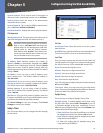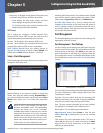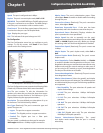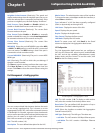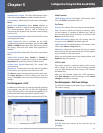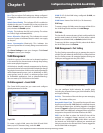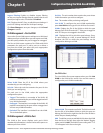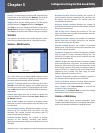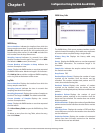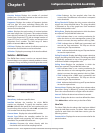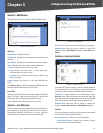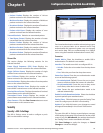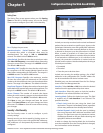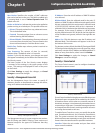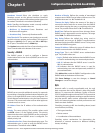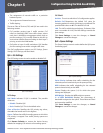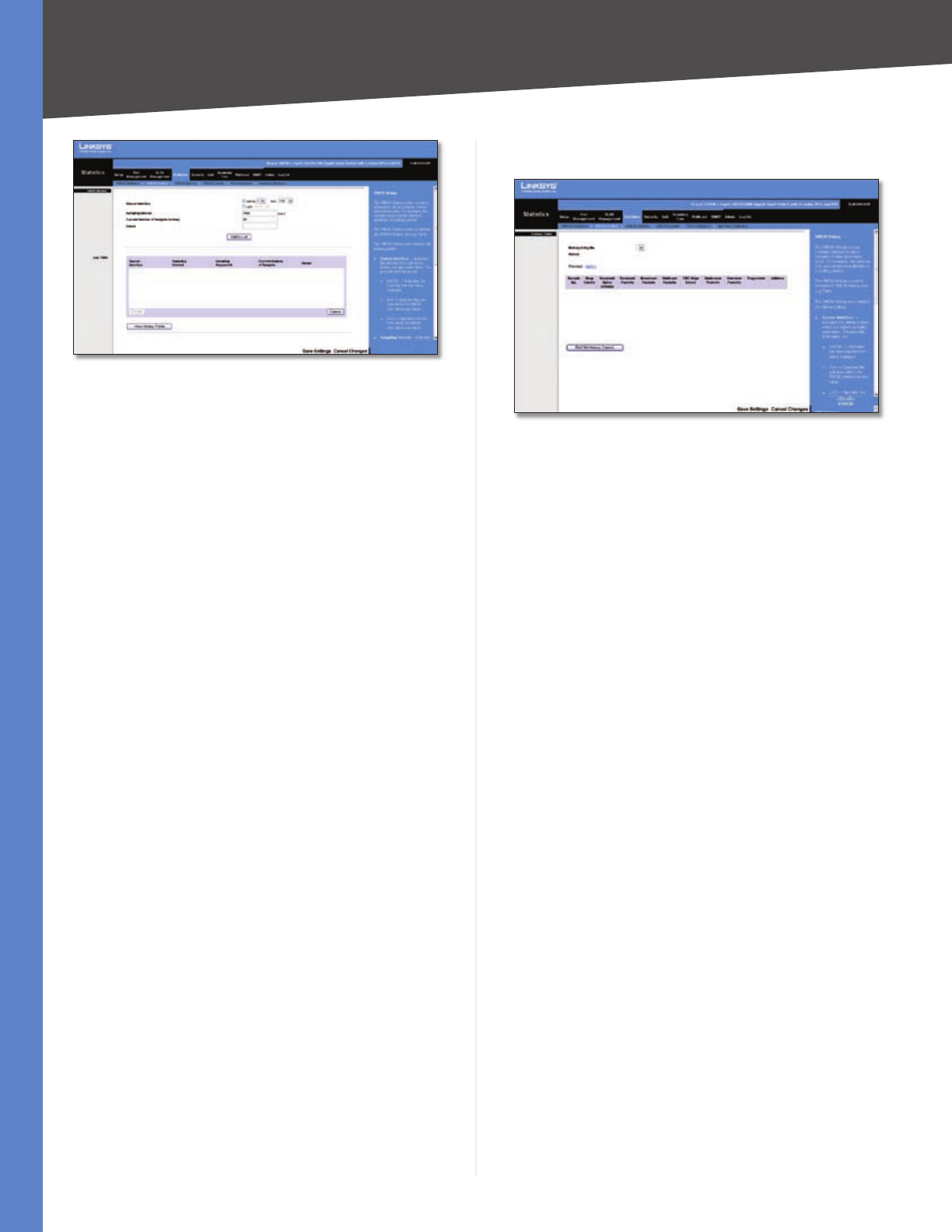
Chapter 5
Configuration Using the Web-based Utility
27
24/48-Port 10/100 + 4-Port Gigabit Smart Switch with Resilient Clustering Technology and PoE
Statistics > RMON History
RMON History
Source Interface Indicates the interface from which the
history samples were taken. To specify the interface, select
Unit No. (default) and specify the unit number and port
from the drop-down menus, or select LAG and select the
LAG number from the drop-down menu.
Sampling Interval Indicates (in seconds) how often
samples are taken from the ports. The range is 1 to 3600.
The default is 1800 seconds (30 minutes).
Current Number of Samples to Keep Indicates the
number of samples to save.
Owner Displays the RMON station or user that requested
the RMON information. Maximum length is 20 characters.
Click Add to List to add the configured RMON sampling
to the Log Table at the bottom of the screen.
Log Table
Source Interface Displays the interface from which the
history samples were taken.
Sampling Interval Indicates the time in seconds that
samplings are taken from the port.
Sampling Requested Displays the number of samples to
be saved. The range is 1-65535. The default value is 50.
Current Number of Samples Displays the current
number of samples taken.
Owner Displays the RMON station or user that requested
the information.
Click View History Table to open the RMON History Table
screen.
To delete an entry from the Log Table, select the entry,
then click Delete.
RMON History Table
Statistics > RMON History > RMON HIstory Table
The RMON History Table screen contains interface specific
statistical network samplings. Each table entry represents
all counter values compiled during a single sample.
History Entry No. Displays the history table entry
number.
Owner Displays the RMON station or user that requested
the RMON information. The maximum length is 20
characters.
Sample No. Indicates the sample number from which
the statistics were taken.
Drop Events TBD
Received Bytes (Octets) Displays the number of octets
received on the interface since the device was last
refreshed. This number includes bad packets and FCS
octets, but excludes framing bits.
Received Packets Displays the number of packets
received on the interface since the device was last
refreshed, including bad packets, Multicast and Broadcast
packets.
Broadcast Packets Displays the number of good
Broadcast packets received on the interface since the
device was last refreshed. This number does not include
Multicast packets.
Multicast Packets Displays the number of good Multicast
packets received on the interface since the device was last
refreshed.
CRC Align Errors Displays the number of CRC and Align
errors that have occurred on the interface since the device
was last refreshed.
Undersize Packets Displays the number of undersized
packets (less than 64 octets) received on the interface
since the device was last refreshed.



